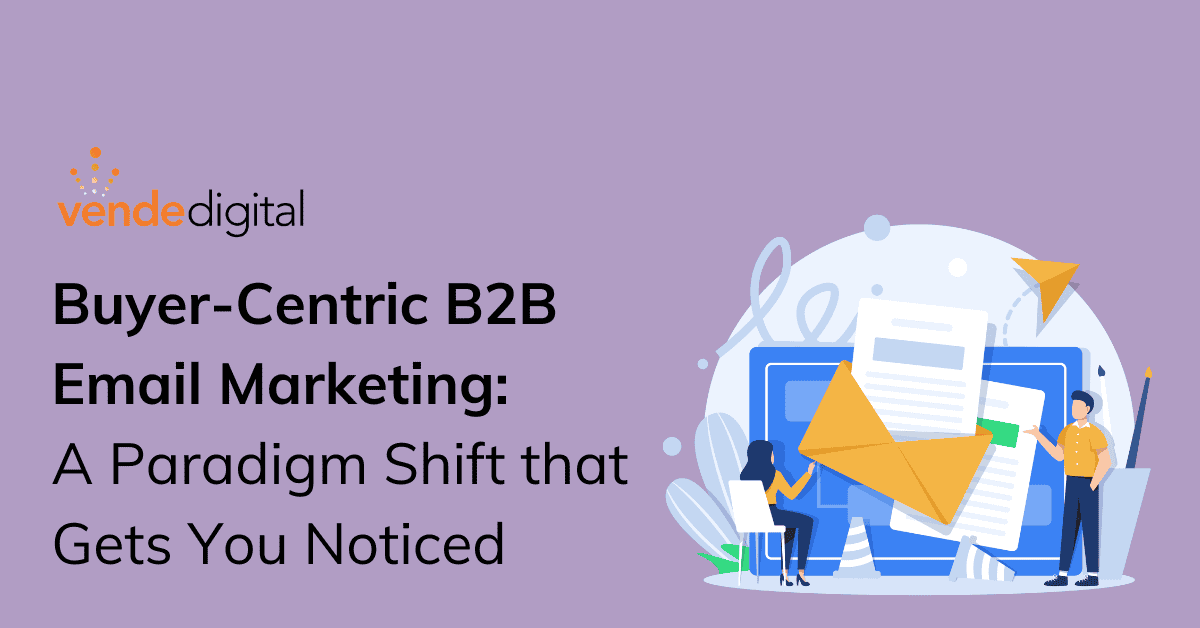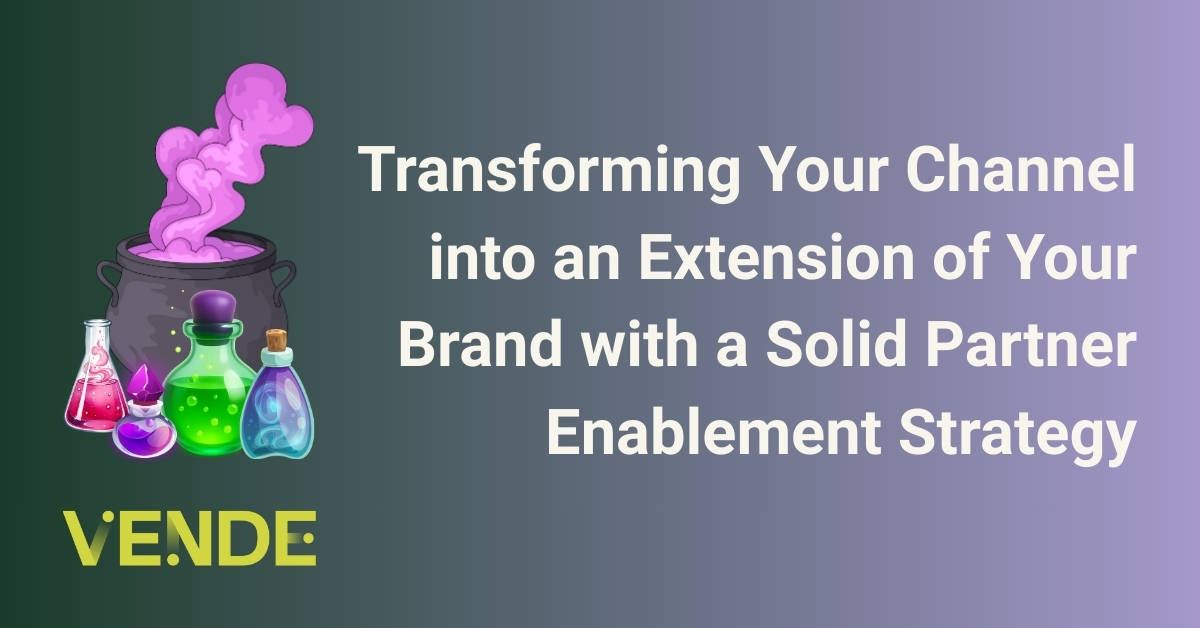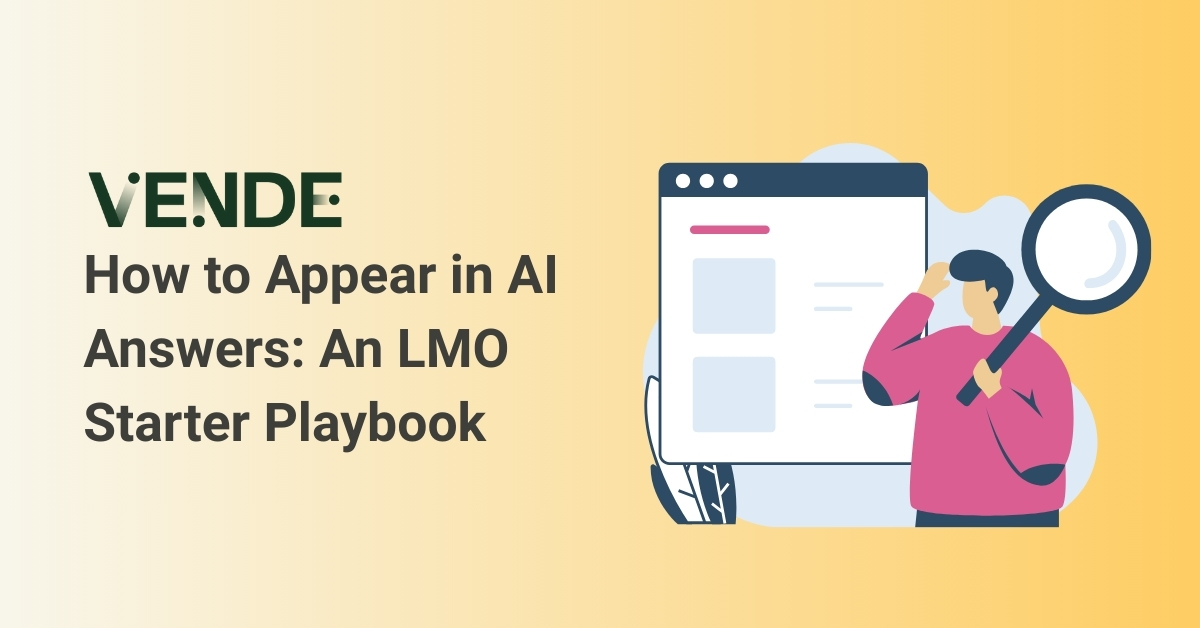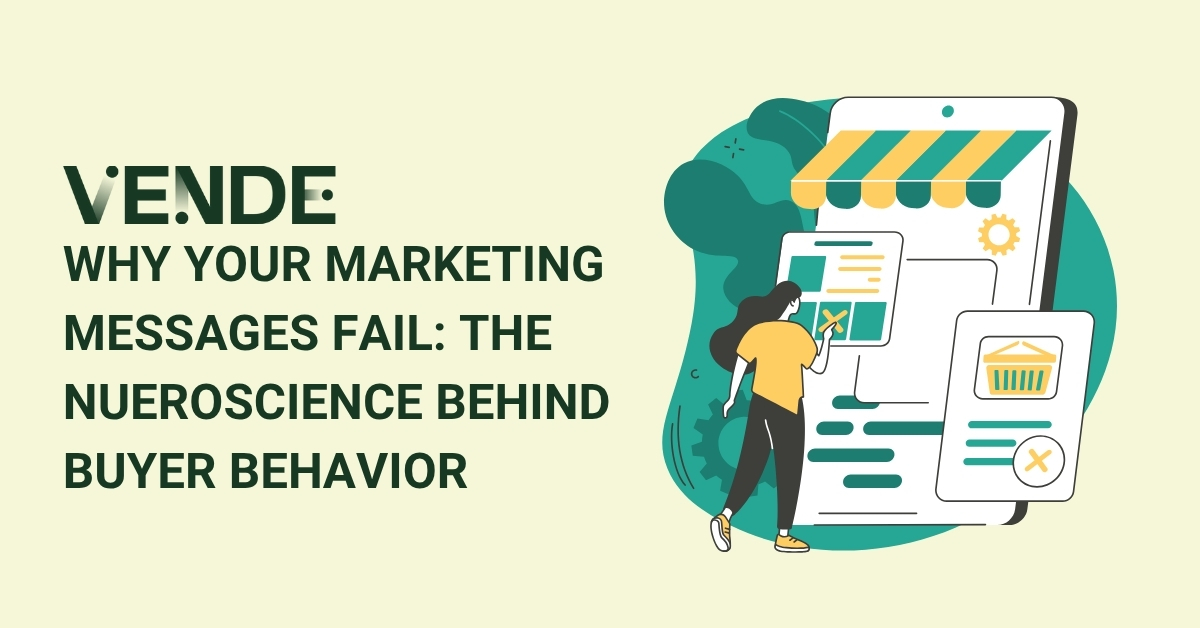
Buyer-Centric B2B Email Marketing: A Paradigm Shift that Gets You Noticed
Imagine walking into a networking event, introducing yourself to someone new, and immediately launching into a sales pitch about your product without even asking their name. Sounds absurd, right? Yet, this is precisely what many B2B marketers do with their email campaigns every single day.
Welcome to the first part of our two-part series on revolutionizing B2B email marketing. In this series, we'll challenge everything you thought you knew about reaching and engaging your business audience through email campaigns.
The world of B2B email marketing is at a crossroads. On one side, the traditional, company-centric “Buy Now!” approach has dominated for years. On the other hand, a new paradigm is emerging—one that puts the buyer at the center of everything.
In Part 1, we'll explore why traditional approaches are failing and introduce you to the buyer-centric framework that's transforming B2B email campaigns. We'll also explore the evolution of email strategies, the limitations of conventional methods, and the foundational principles of a buyer-first approach.
Think About Becoming the Remedy to Inbox Hell
On average, your audience receives 121 emails per day. How many of these emails genuinely resonate with their needs and challenges? How many get deleted before they’re even opened? If you're like most B2B marketers, you're probably wincing at the thought.
It's time for a radical shift in how we approach B2B email marketing. Forget what you know about funnels, blast campaigns, cold emails, and one-size-fits-all messaging. The future of B2B email success lies in understanding and aligning with the buyer's journey, intentions, and needs.
In this series, we will challenge everything you thought you knew about B2B email marketing best practices. We'll explore why the traditional funnel-centric approach is failing, introduce you to a buyer-centric framework that works, and show you how to create email campaigns that your prospects will not only open but genuinely appreciate.
The Limitations of Traditional B2B Email Marketing Efforts
B2B marketers' approaches to email campaigns have evolved over time. Yet most fall short for one primary reason: they put their selfish needs ahead of meeting the buyers' needs. Let's examine this evolution and its limitations:
Company-Centric Email Marketing
Companies use their email channels to send announcements or promotions. They rarely offer value content to educate, nurture, and build relationships. This approach, while simple, often leads to crafting generic emails with low engagement and high unsubscribe rates.
Funnel-Centric Email Marketing
As marketing software became more sophisticated, many B2B companies layered in an engagement-centric approach based on the funnel stage. Awareness, Consideration, and Decision—have been the backbone of B2B email strategies for decades. Marketers craft different messages for each stage, pushing prospects down the funnel. However, this linear approach assumes a straightforward buyer's journey that rarely exists in the complex world of B2B purchasing.
This structure often leads engagement marketers, who primarily focus on TOFU metrics, to build their email campaign programs to drive clicks rather than to foster and generate demand. While this was an improvement, it still often missed the mark in truly understanding and addressing buyer needs.
The Rise of Trigger-Centric Email Marketing
The next evolution came with trigger-based email marketing, where companies create automated email marketing campaigns based on website browsing behavior. This more sophisticated approach is still limited by a lack of a holistic customer view, the potential for feeling impersonal if not executed well, and the missing opportunities for deeper relationships.

Source: Sheri Otto
B2B Email Marketing Still Faces Significant Challenges
The driving force in the evolution of email marketing has been the attempt to scale a channel inherently meant for 1:1 engagement. This tension between personalization and scale is at the heart of many email marketing challenges.
- Misalignment with buyer needs and intentions
- Over-reliance on generic templates and one-size-fits-all messaging
- Focusing on product features rather than buyer benefits
- Neglecting true email personalization beyond using the recipient's name
- Prioritizing the quantity of emails over the quality of content

According to Sheri Otto, a former email marketer for HubSpot who shared in a recent Demand Gen Jam Session, the consequences of these limitations are significant. They include a damaged brand reputation resulting from irrelevant or overly sales-oriented emails, missed chances to cultivate potential high-value customers, wasted time and resources on ineffective campaigns, and increased unsubscribe rates and spam complaints. Therefore, there is a clear need for a new approach that puts the customer’s needs first.
The Need for a Customer-Centric Approach to Improve Customer Satisfaction
Here's a hard truth: your buyers don't care about your funnel. They care about solving their problems. Traditional email marketing often fails to address buyers' actual needs and intentions at different stages of their journey. Instead, it focuses on what the company wants to say rather than what the buyer needs to hear.
In a customer-centric approach, companies leverage the power of email marketing to:
- Build relationships and trust with contacts.
- Monitor engagement signals with their audience to understand buyer intent
- Move contacts closer to the purchase decision in an intuitive and timely manner.
The Hidden Cost of Traditional Email Marketing Approaches
The cost of sending irrelevant, poorly timed, or self-centered emails is higher than ever. Your messages aren't just ignored – they're damaging your brand's reputation and relationship with potential buyers.
Putting Your Buyer’s Agenda Ahead of Your Own
It's clear that the traditional, funnel-centric approach to B2B email marketing is no longer sufficient. The future lies not in pushing your agenda but in aligning with your buyer's journey and intentions. Let's explore this paradigm shift:
Forget about your funnel for a moment. Instead, ask yourself:
- What does my buyer want to accomplish?
- What challenges are they facing?
- What’s broken in their business?
- Why is it happening?
- What does their decision journey look like?
- Who is involved in the decision-making process?
- How can I provide value at each stage of their journey?
This shift in perspective is the foundation of buyer-centric email marketing best practices. Developing your email marketing strategy around the buyer's agenda will build trust and authority and increase the likelihood of generating leads.
The Importance of Understanding Buyer Intentions
Buyers are on individual journeys. No two prospects have the same journey or the same individuals involved. Their needs and intentions will also evolve throughout this process, underscoring the importance of customizing communication to resonate with them at each stage.
By taking the time to understand your buyer's intentions, you can tailor your messaging to meet their specific needs. This demonstrates that you care about their success and are committed to helping them achieve their goals.
So, next time you write an email, think about your buyers and their intentions. How can you best serve them and address their concerns? You can create email content that leads to stronger relationships and increased sales by putting yourself in their shoes.
Aligning Email Campaigns with the Buyer's Journey
Rather than fixating on the classic awareness, consideration, and decision stages, consider adopting the Jobs to Be Done (JTBD) framework. This method allows for a deeper grasp of customers' fundamental tasks to acquire a product to meet a goal or resolve an issue. Aligning email initiatives with the following JTBD framework enables the creation of emails that better address the buyer's genuine requirements and motivations.
- Discover: Buyers are becoming aware of a problem or opportunity
- Learn: They're educating themselves about potential solutions
- Evaluate: They're comparing different options
- Buy: They're making a purchase decision
- Engage: They're using the product or service
- Advocate: They're sharing their experience with others
Each " job" represents a different set of buyer needs and intentions. Your email marketing strategy should partner with the buyer to accomplish these “jobs.”
Partnering in Their Pursuit
Effective B2B email marketing best practices hinge on "partnering in their pursuit." This involves offering valuable email content and resources to support their goals and portraying your brand as a supportive advisor rather than a sales-centric entity.
For example:
- In the Discover stage, your emails might share industry trends or highlight common challenges
- For Learn, you could offer educational content like whitepapers or webinars
- In the Evaluate stage, case studies or comparison guides could be valuable
- For Buy, provide clear next steps or easy ways to connect with sales
- In the Engage stage, onboarding tips or best practices can be helpful
- For Advocate, share ways for satisfied customers to refer others or provide testimonials

This approach will make your communications more relevant and valuable. You're not just sending emails – you're providing a helpful service that guides your prospects through their journey, building trust and positioning your brand as a true partner.
Uncovering Gold: Analyzing Your Customer Data to Identify Opportunities
In B2B email, customer data is your compass. It guides your decisions, helps you avoid pitfalls, and points you towards opportunities you might otherwise miss. By harnessing the power of marketing automation data, you're not just sending emails but crafting experiences that resonate with your buyers at every stage of their journey.
Leveraging Digital Marketing Tools
By analyzing your data, you can identify patterns and trends that can help guide your email marketing efforts.
Step One: Gap Analysis
Start by identifying gaps in the buying process. Imagine you're seeing high traffic to your blog posts, but your case study pages are as quiet as a library on a Friday night.
This mismatch could indicate a gap in moving prospects from the Learn stage to the Evaluation stage. It's like having a map of your buyer's journey with an extensive "Here Be Dragons" section in the middle. By recognizing these gaps, you can create targeted email content to bridge them, ensuring a smoother journey for your prospects.
Step Two: Optizing Conversion Paths
Think of your email sequences and website as a maze. Your goal is to guide prospects through this maze to the treasure (in this case, a conversion).
Analyzing where people drop off can help you identify dead ends and wrong turns in your maze. Are trial sign-ups down? It might be time to examine the path from your email CTA to the sign-up page. There could be a confusing turn or an unexpected obstacle, causing prospects to give up before reaching the goal.
Step Three: Content
Now, let's talk about content. Content that works in one stage of the buyer's journey might fall flat in another. By evaluating which types of content resonate best at each stage, you can create a content marketing strategy perfectly tuned to your target audience's needs.
If you notice that specific whitepapers are leading to more sales conversations, giving them top billing in your early-stage emails might be the right thing to do.
The ADHD Framework for Attention-Grabbing Emails
Even the best-intentioned emails still need to be seen and opened. Grabbing and holding attention has become increasingly challenging in a world of distractions. The ADHD (pun intended) framework aims to cut through the noise and deliver messages that resonate in today’s attention-scarce environment. ADHD in our context stands for:
- Attention: Capture it quickly with relevant, personalized subject lines and preview text.
- Direct: Get straight to the point. Respect your buyer's time.
- Human: Build a connection. Write as if you're speaking to a real person (because you are).
- Direction: Guide your reader towards a clear next step.
This framework ensures that every email you send is purposeful and buyer-centric. You can read more about this framework here.
Find Out Why Your Emails Aren’t Working With Our Diagnostic Checklist
Get our exclusive “ADHD Diagnostic Checklist for B2B Email Marketing.” This powerful checklist will help you:
✓ Identify key areas for improvement in your email
✓ Ensure your emails capture Attention, communicate Directly, maintain a Human connection, and provide clear Direction
✓ Boost your open rates, click-through rates, and conversions
Don’t let another email campaign underperform. Get your free checklist now and start optimizing your B2B email marketing efforts today!

By downloading this checklist, you’ll have a handy reference guide to ensure your B2B emails are always working at peak performance.
Embracing the Buyer-Centric Revolution in B2B Email Marketing
As we've explored in this first part of our series, the world of B2B email marketing is undergoing a profound shift. The days of company-centric, one-size-fits-all email blasts are behind us. Today's successful B2B email marketers are those who put their buyers first, aligning their strategies with the buyer's journey and intentions.
We've uncovered the limitations of traditional approaches and introduced a new paradigm that prioritizes the buyer's agenda. By adopting the Jobs to Be Done framework and implementing the ADHD approach (Attention, Direct, Human, Direction), you can create emails that get opened and truly resonate with your target audience.
This buyer-centric approach isn't just about being considerate—it's a strategic imperative in today's crowded inboxes.
As you reflect on your current email marketing strategies, ask yourself: Are you truly putting your buyers' needs first? Are you partnering with them in their pursuit or simply pursuing your own agenda?
Understanding the concept is just the first step. The real challenge—and opportunity—lies in implementing it.
Coming Up in Part 2
In the next part of this series, we'll dive deep into the practical aspects of customer-centric B2B email marketing. We'll explore:
- How to craft buyer-centric email campaigns that drive engagement
- Strategies for personalizing your emails beyond just using names
- Leveraging technology to scale your buyer-centric approach
- Measuring the success of your buyer-centric emails
- A real-world case study that puts these principles into action
Don't miss out on these actionable insights. Subscribe to our newsletter or bookmark our blog to be notified when Part 2 is published. Your journey towards more effective, customer-centric B2B email marketing is just beginning!







